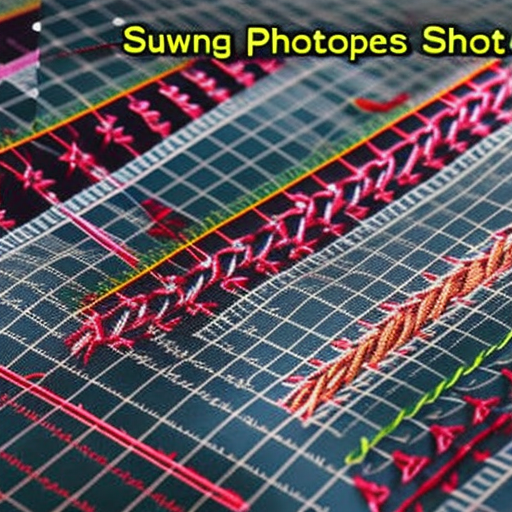Mastering sewing stitches is essential for any aspiring or experienced seamstress. The right stitching technique can enhance the durability and aesthetics of your sewing projects. Whether you’re a beginner or looking to expand your sewing knowledge, this cheat sheet will serve as your ultimate guide to different stitches.
1. Running Stitch
The running stitch is one of the most basic and versatile stitches. It’s created by passing the needle in and out of the fabric, forming straight lines. This stitch is commonly used for gathering fabric or basting.
2. Backstitch
The backstitch is a strong stitch used for securing seams or creating outlines. It involves inserting the needle a stitch length forward and then bringing it back, overlapping the previous stitch. This creates a sturdy, continuous line.
3. Whipstitch
The whipstitch is perfect for sewing two fabric edges together. It involves passing the needle over the fabric edges in a diagonal manner. This stitch creates a visible line of stitches and is often used for hand- or machine-sewn hems.
4. Slip Stitch
The slip stitch is nearly invisible from the front, making it ideal for hemming or joining two folded edges. It’s executed by taking small, barely visible stitches from one folded edge to the other.
5. Blind Hem Stitch
The blind hem stitch is designed to create an invisible hem. It provides a clean finish to garments. This stitch involves folding the fabric and catching a thread every few millimeters.
6. Overlock Stitch
The overlock stitch, often done by a serger, trims the fabric edge as it sews, preventing fraying. It’s commonly used for finishing seams and edges on fabrics like knitwear.
7. Zigzag Stitch
The zigzag stitch is versatile and useful for preventing fraying, creating stretchable seams, or adding decorative embellishments. It entails the needle moving from side to side while sewing forward.
8. Buttonhole Stitch
The buttonhole stitch creates a secure and neatly finished buttonhole for closures. It’s executed by stitching around the buttonhole edges, creating a tight and reinforced stitch structure.
9. Blanket Stitch
The blanket stitch is often used for decorative purposes or to prevent fabric edges from fraying. It’s formed by passing the needle through the fabric and looping the thread over the edge to create a neat stitch.
10. Cross Stitch
The cross stitch is widely used in embroidery to produce intricate patterns and designs. It involves creating two diagonal stitches that cross each other to form an “X” shape.
Pro Tip: Remember to select the appropriate needle, thread, and stitch length for your sewing projects. Always practice on scrap fabric before working on your final piece to ensure the desired result.
Now that you have this handy sewing stitch cheat sheet, you’re ready to tackle a wide range of sewing projects with confidence and finesse. Happy stitching!




